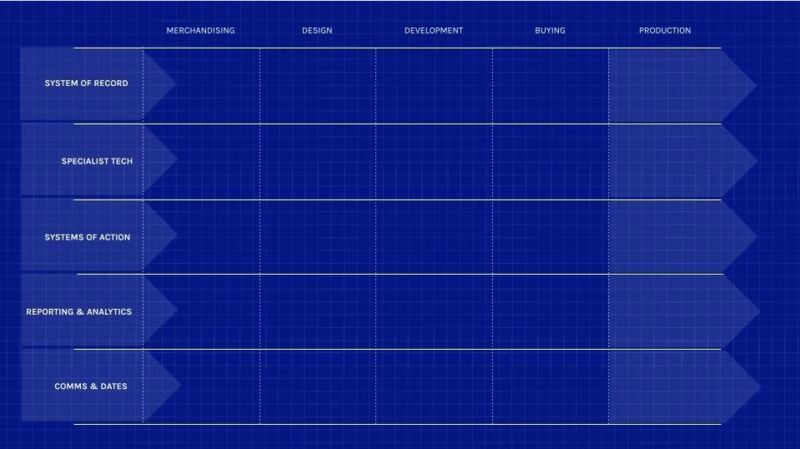Stop getting sold a software category. Design your systems using this framework and visualise the flow of information across your business.

I've been using the framework below to map the flow of information between systems and teams. It has been useful for visualising gaps in the technology stack and it is remarkable how well-served some functions are versus others.
Systems of Record
What is the system of record for each team?
Where is data being recorded and providing the source of truth for the data and information this team is responsible for creating and managing?
If a system of record is a generic tool like Excel or Dropbox we know that addressing that is a good starting point. The system of record is the foundation of the tech stack but it doesn't have to do everything.
Common problems with systems of record are that they are hard to get information out of and into. Teams might be spending hours getting CSVs into the correct format or for getting data out the API might be non-existent or hard to work with.
Specialist Systems
What specialist technology has been invested in to enable this team to do the job? For example, a warehouse might have a warehouse management system. The absence of a specialist tech solution isn't necessarily a bad thing, perhaps your system of record can do this job well enough.
Systems of Action
Software started from a need to record what has happened, replacing analogue solutions like record cards and filing cabinets. That is why many CRM solutions still refer to records. The early software solutions in each market were designed to replace the filing cabinets and became filing cabinets in the sky.
The problem with this approach was that instead of making people more productive, individually, they actually create more work because you have to keep them updated.
Specialised systems of action are focused on enabling you to record what happens but prioritise your productivity over just recording down information.
An example of a system of action is Hubspot CRM. It has established a huge market share in CRM against Salesforce CRM the leader in the space by enabling sales and marketing teams to get more done rather than just record what they've done.
In the absence of specialist systems, the most used systems of action are Excel, Google Sheets and Powerpoint.
Report & Analyse
Where is data being gathered by your team? Are you collating it manually from multiple sources into Google Sheets or do you have some reporting inside your specialist systems?
If data is in a specialist system or system of record it may be possible to pull the data into Analytics and BI tools.
Communicate & Coordinate
How is information shared across the business?
What tools are being used to keep people updated on how your team is performing?
How are key dates and milestones being managed?
It is very hard for this part of your tech stack to function well without the other parts being well thought through. Often teams are overreliant on speaking/calls/meetings and there is lots of unstructured back and forth on email or Slack.
